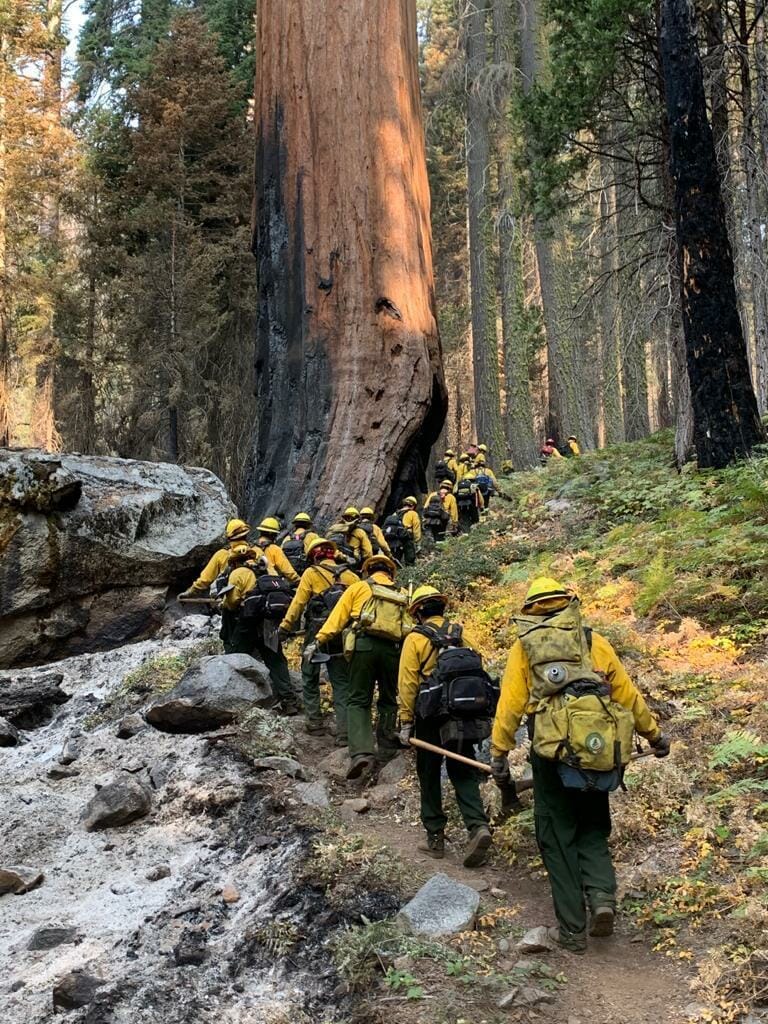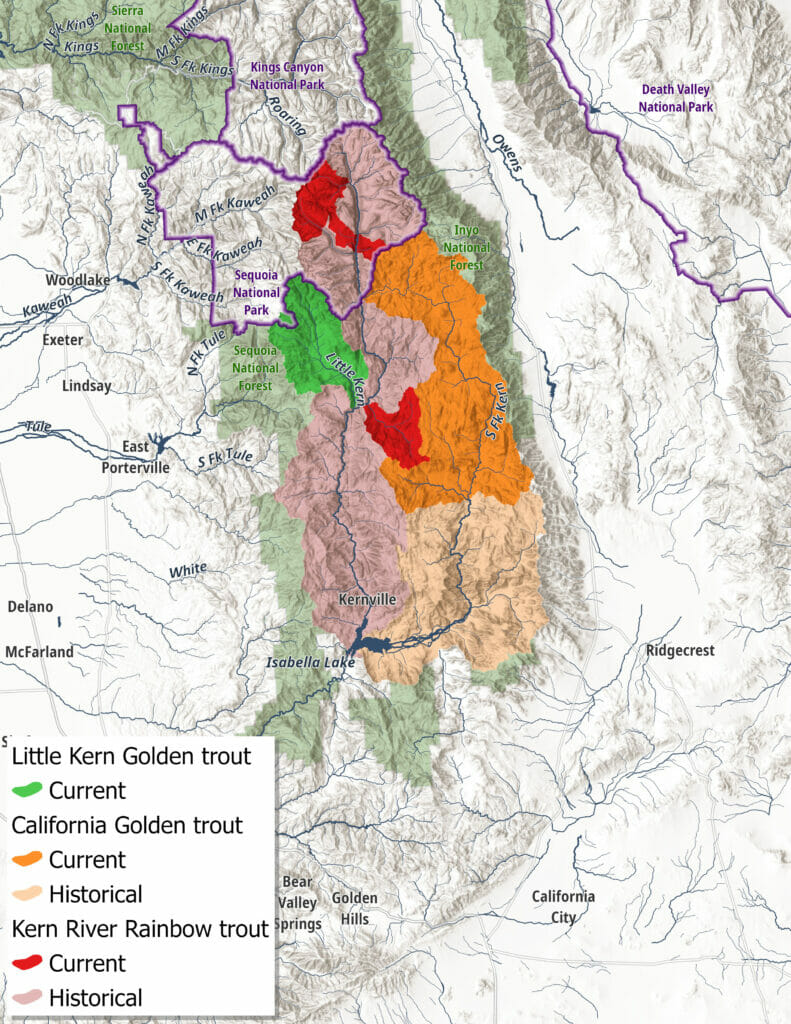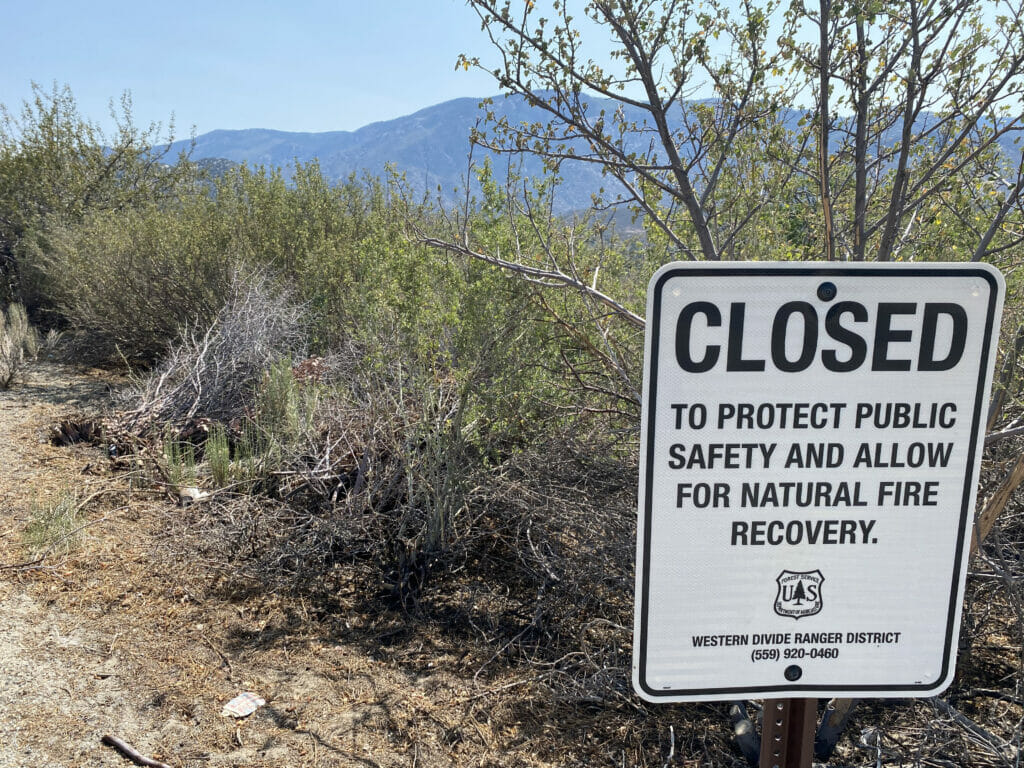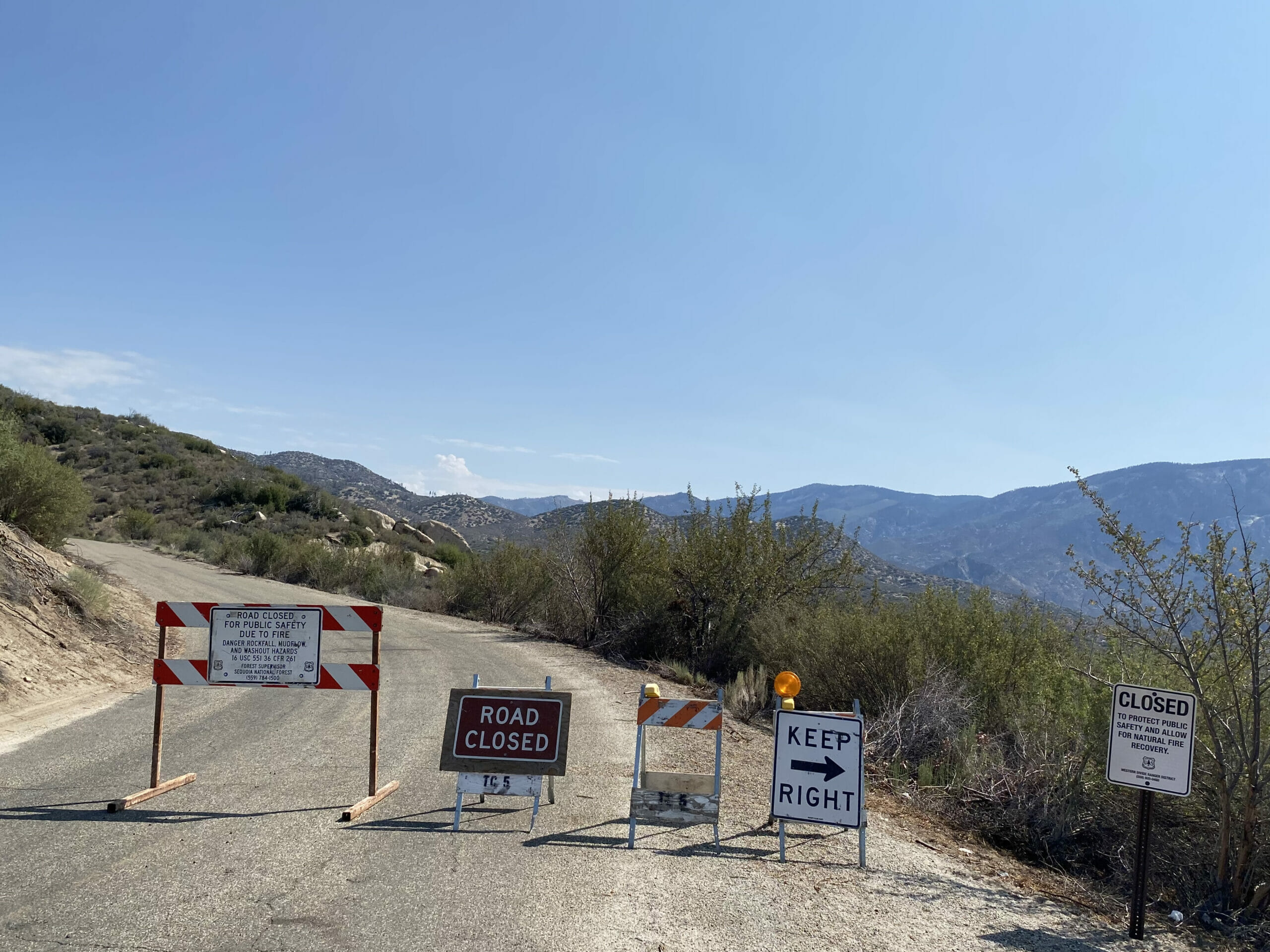Author Dan Ritz hits the end of the road while trying to get to a better of idea of why he couldn’t fish for the Little Kern golden trout. Dan Ritz photo.
Golden Trout Wilderness Area is closed, but a connection to the Little Kern golden trout was still made
Daniel Ritz is fishing across the Western United States this summer in an attempt to reach the Master Caster class of the Western Native Trout Challenge, attempting to land each of the 20 native trout species in their historical ranges of the 12 states in the West. You can follow Ritz as he travels across the West by following Trout Unlimited, Orvis, Western Native Trout Challenge and Montana Fly Company on social media using the #WesternTroutChallenge.
The email forwarded by Therese Thompson, coordinator for the Western Native Trout Initiative, confirmed the disappointment I had been anticipating all summer. It was the metaphorical nail in the coffin on my attempt to fish for the 20 available species in the Western Native Trout challenge.
While supremely disappointed, I responded saying that while this was a tragic event, I thought there was value in sharing what can only be called an unfortunate non-experience.
A combination of isolation and wildfires have culminated in what I can only hope are unfortunately exemplary circumstances.
“RE: IMPORTANT FOR SUMMER 2021: Attention anglers planning to attempt to catch Little Kern Golden Trout in California this summer. We want to alert you that the US Forest Service announced Forest Order number 0513-21-08 which is a closure through December 2021 of many of the roads and trails that are popular entry points into the Golden Trout Wilderness. Read the full closure order and download a map here.”
Email from Therese Thompson
Initially listed as threatened in 1978, the Western Native Trout Initiative reports Little Kern golden trout are generally present in good numbers, but found almost entirely within the designated Golden Trout Wilderness.
Despite the tragedy of the SQF Complex fires in and around the Golden Trout Wilderness in late summer 2020, continued drought in southern California may actually offer a bit of saving grace compared to other wildfire settings.

In April 2021, Bakersfield.com reported 2021 rainfall totals and water holdings at Lake Isabella were at a dismal 26 percent of normal. This following 2020 which was only 43 percent of normal. These drought conditions in dry ecosystems undoubtedly assisted in wildfire intensity, but some suspect these drought conditions following a wildfire leave hope for aquatic habitat and species.
While I was not able to get an official quote from U.S. Forest Service, I spoke with a few Forest Service personnel outside the Kern Valley Fly Fishers shop. They mentioned that while the temperature mosaic offered by an intense wildfire will raise stream temperatures, which is obviously perilous for trout, a lack of moisture post fire reduced the generally post-fire ash runoff that is classically considered the most negative impact for aquatic species and habitat.
Often, silt and ash runoff can occur for months and even years. There is reason to believe very little ash runoff occurred at all following the SQF Complex Fire. That lack of detrimental ash runoff that generally can suffocate fish, smother habitat and destroy riparian areas hypothetically allowed for substantial and crucial riparian revegetation during the crucial years following the fire.

While these reports were all personal observation-based and unable to be confirmed, these conversations allowed me to hold out some hope, especially for the Little Kern golden trout.
On a podcast with ORVIS’ Tom Rosenbauer, Becky Flitcroft, a fisheries biologist with the U.S. Forest Service and an expert on disturbances to trout streams, shared some surprising results in the wake of fires. Not only are they not terribly destructive, but they can — in specific situations — actually be beneficial. Just not on a scale that is convenient for many impatient anglers. Flitcroft shared studies that show how wildfires can actually increase long-term productivity of rivers, but we may have to wait five to 10 years to see those results. Those positive impacts are highly dependent on recolonization and migration ability.
Simply put, wildfires have highly variable temperature ranges and native fish will move to safety if they can, and then return to available habitat when the time comes.
This podcast was on my mind as I took a day’s drive to the end of the road where public access is closed downstream of the Forks of the Kern.

You see one sign after another, urging you to turn around, before reaching a literal gate blocking access to the scorched lunarscape of the Golden Trout Wilderness far in the distance.
While that gate is meant to allow the habitat to restore itself without human interruption, I couldn’t help but think the key to allowing wildfires to be naturally positive features that we need to be sure to open the gates for our native species.
We are yet to see what the future holds for Little Kern golden trout, but in this pursuit, I learned everything I needed to know without holding one in my hand



